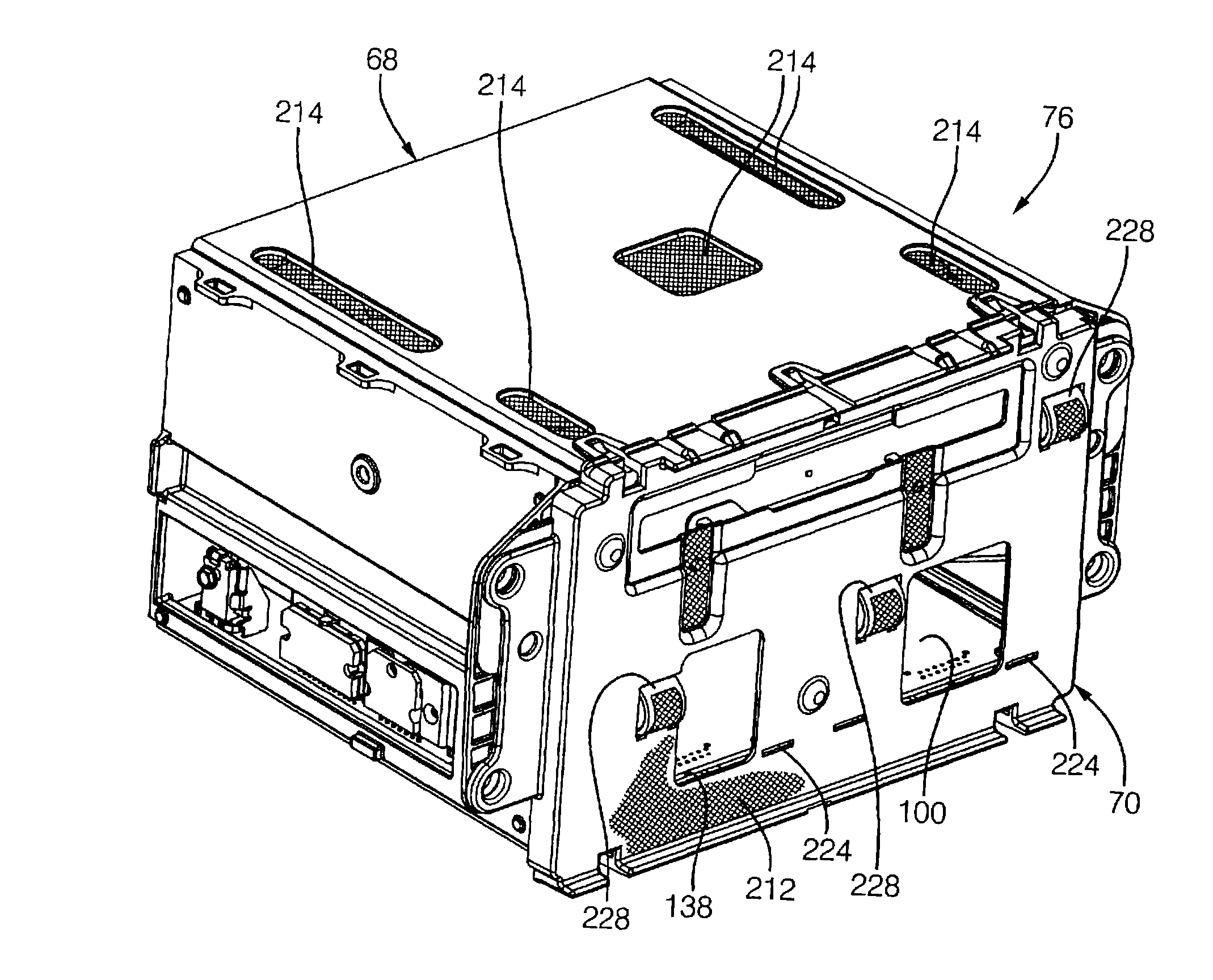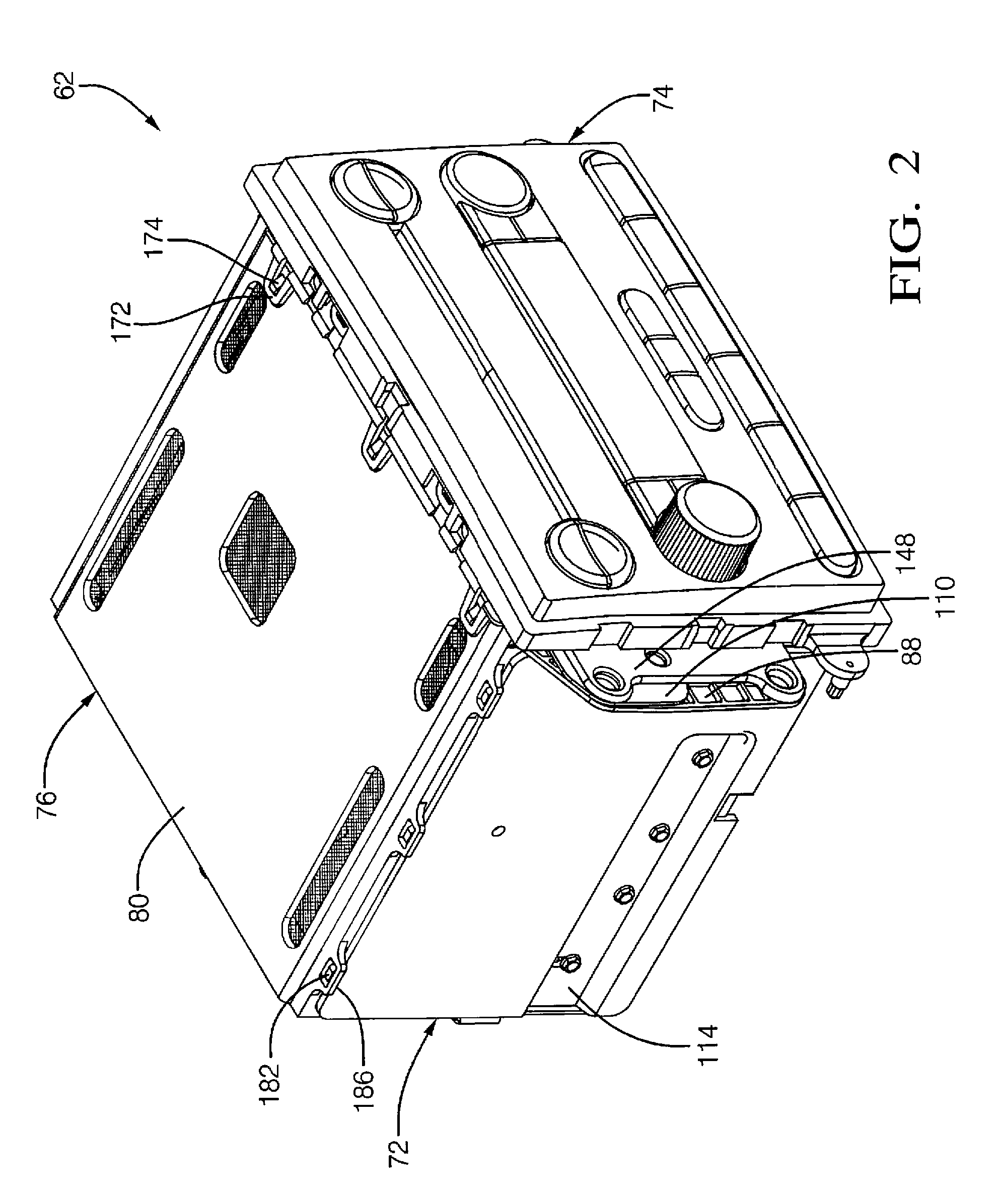Lightweight electronic device for automotive applications and method
a technology for electronic devices and automotive applications, applied in the direction of coupling device connections, transducer diaphragms, transducer types, etc., can solve the problems of threaded fasteners, upstream failures, and long assembly cycle time, so as to minimize the number of work stations, reduce the number of required handling, and reduce the cost and labor.
- Summary
- Abstract
- Description
- Claims
- Application Information
AI Technical Summary
Benefits of technology
Problems solved by technology
Method used
Image
Examples
Embodiment Construction
[0069]The present invention can be applied in its broadest sense to electronic devices and systems where shielding from radio frequency interference (RFI), electromagnetic interference (EMI), bulk current injection (BCI) and / or electrostatic discharge (ESD) is required. In addition to vehicle based radios and audio entertainment systems, the invention can be advantageously applied in “infotainment” and telematic systems. Furthermore, the present invention employs virtually “fastenerless” design architecture to facilitate low-cost, high volume production techniques.
[0070]For convenience of understanding, the following description will be focused primarily upon an automotive radio / CD player system.
[0071]The present invention reflects an improved design to reduce the overall weight of an automotive radio / CD player without compromising the strength of the unit. The present invention employs a polymer based, electrically insulative material that can be molded to provide the necessary fea...
PUM
| Property | Measurement | Unit |
|---|---|---|
| weight | aaaaa | aaaaa |
| angle | aaaaa | aaaaa |
| electrically conductive | aaaaa | aaaaa |
Abstract
Description
Claims
Application Information
 Login to View More
Login to View More - R&D
- Intellectual Property
- Life Sciences
- Materials
- Tech Scout
- Unparalleled Data Quality
- Higher Quality Content
- 60% Fewer Hallucinations
Browse by: Latest US Patents, China's latest patents, Technical Efficacy Thesaurus, Application Domain, Technology Topic, Popular Technical Reports.
© 2025 PatSnap. All rights reserved.Legal|Privacy policy|Modern Slavery Act Transparency Statement|Sitemap|About US| Contact US: help@patsnap.com



